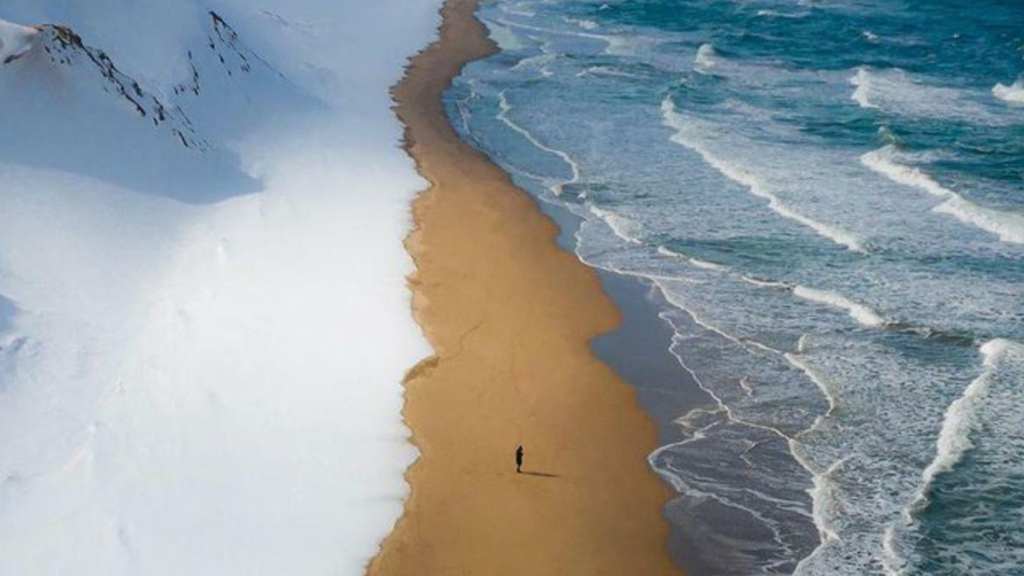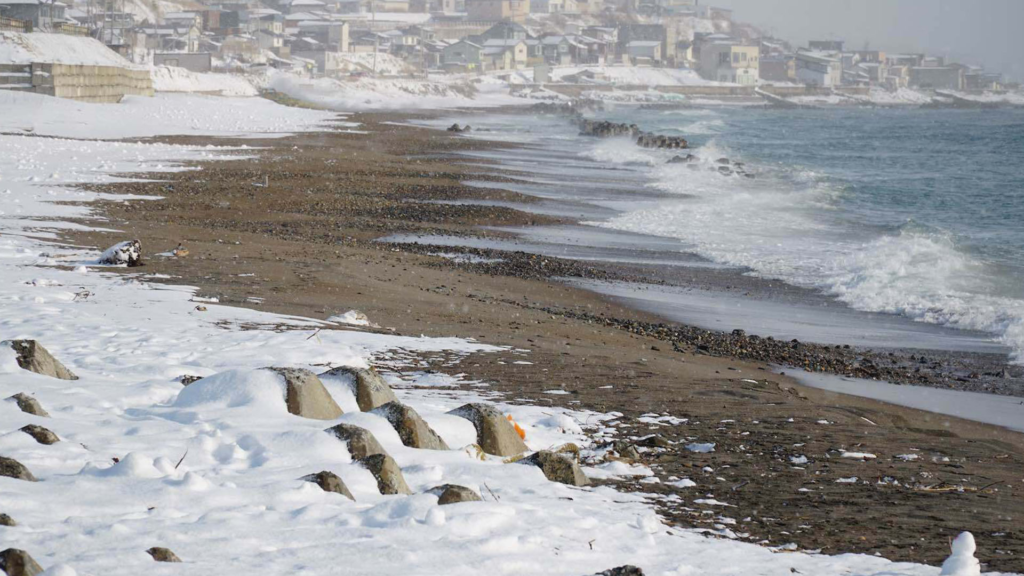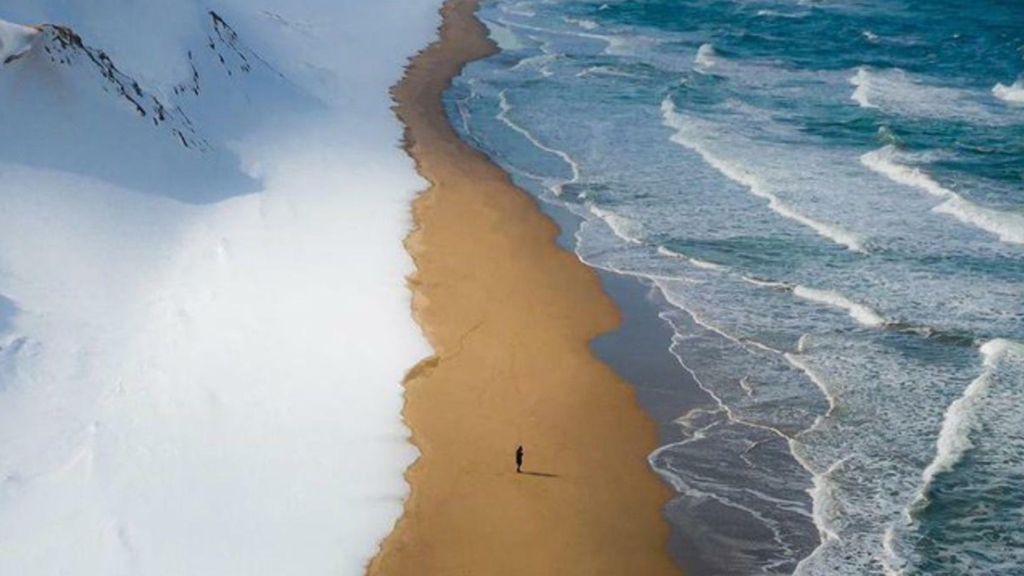What’s on your bucket list? In Japan, there’s a special island with a unique beach that brings together both snow and sand. This special beach is part of the San’in Kaigan Geopark, which was recognized as a Japanese Geopark in 2008 and a UNESCO Global Geopark in 2010.
It’s over on the west side of Japan, situated on Hokkaido Island. The beach stretches from the eastern Kyogamisaki Cape in Kyoto to the western Hakuto Kaigan Coast in Tottori. The geopark is filled with all sorts of interesting geological features related to the formation of the Sea of Japan. Think sand bars, dunes, volcanoes, valleys, pine forests, and Ria-type coasts – a diverse mix of landscapes.
Read More: A Journey of Tradition and Modernity: Six Days in Ishikawa Prefecture, Japan
Add this to your bucket list

Now, the snow and ice that cover this beach are brought in by strong winds. These winds carry drift ice – frozen bits of freshwater – all the way from the Amur River. This unique event usually happens between late January and early February when the beach and sea get filled with mini-icebergs.
You can check out this amazing phenomenon from the shore or join a cruise on an icebreaker. These cruises leave from Monbetsu, Abashiri, and Rausu. If you’re feeling more adventurous, you can suit up in a dry suit and take a guided walk on the ice itself from Shiretoko. During this walk, you might even spot some local wildlife, like white-tailed eagles and sea eagles, hunting for fish in this frozen landscape.
Read More: Singapore Guide: The Lion City On A Little Red Dot
And it’s not just about ice and snow
The geopark is home to rare plants like Ranunculus nipponicus, Pseudolysimachion ornatum, and Ciconia boyciana. Hokkaido, the island on which this geopark is, is a hotspot for various marine and avian creatures. The mountains there also house some of the country’s largest mammals, like Ezo sika deer, Ussuri brown bears, and Ezo red foxes.
Winter is an especially good time for wildlife spotting. Seals, sea eagles, and Steller sea lions flock to the Hokkaido shores, pushed south by drift ice from the Kuril Islands. In any season, you might even get a glimpse of the rare and endangered Blakiston’s fish owl—the biggest living owl species.
But the bucket list adventures don’t end there

The Shiretoko Peninsula, also a national park and UNESCO World Heritage Site, is worth exploring. The Shiretoko National Park Nature Center rents out snowshoes for those keen on hiking the Furepe Waterfall Trail. This trail guides hikers through a forest, opening up into a meadow beneath Mount Tenchosan, Mount Rausu, and Mount Io. It concludes with a breathtaking view of Furepe Waterfall, which transforms into frozen tendrils of bluish ice during the winter.
Hokkaido is a birdwatcher’s paradise, especially around the Notsuke Peninsula. The red-crowned crane, once feared to be extinct, now boasts a local population of over 1,000 and can be spotted in the wetlands of Kushiro Shitsugen National Park. This vast marshland also offers stunning views of the twin volcanoes Mount Meakan and Mount Oakan.
So, whether you’re into icy beaches, diverse geology, rare plants, or fascinating wildlife, the Japanese beach where sand meets snow is an extraordinary destination that promises a unique blend of natural wonders throughout the seasons.
Read More: Kuala Lumpur Guide: Twin Giants In A Concrete Jungle


